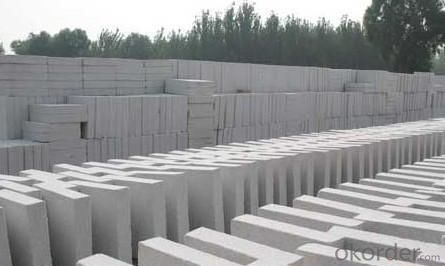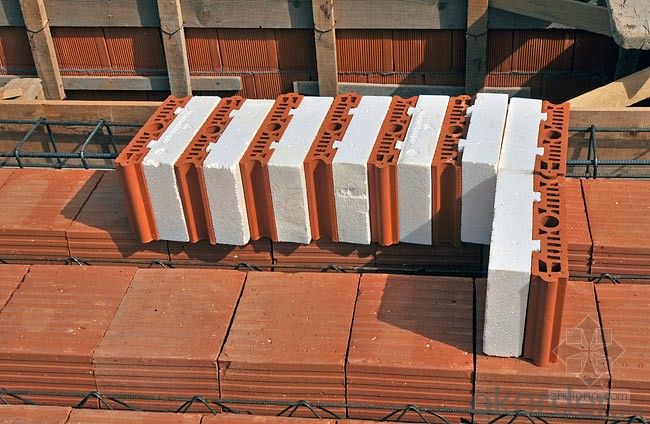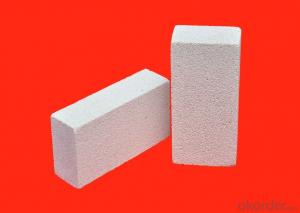Mullita ladrillo refractario refractarios aislantes JM 28
- Loading Port:
- Shanghai
- Payment Terms:
- TT OR LC
- Min Order Qty:
- 5000 kg
- Supply Capability:
- 5000000 kg/month
OKorder Service Pledge
OKorder Financial Service
You Might Also Like
Mullita ladrillo refractario refractarios aislantes JM 23
Aislamiento de calor de la serie okorder ladrillo
La serie okorder ladrillo es un eficaz aislamiento térmico, ahorro de energía, baja en carbono, la protección del medio ambiente avanzado, de acuerdo a la norma ASTM la fabricacion de productos.Okorder serie productos son mejores Li Ning y aislamiento en todo tipo de hornos industriales en el sector metalurgico, aluminio, petroquímica, energía eléctrica y materiales de cerámica de vidrio.Pueden ser utilizados como parte de la capa de aislamiento termico o non - Fusion.Los productos han sido ampliamente utilizados en el horno, logra resultados satisfactorios.
Aplicación de la preservación del calor de ladrillo
Industria metalurgica: Blast Furnace, hot alto horno, horno de calefaccion, etc.
Industria petroquímica: etileno horno horno de cracking, producción de hidrógeno, reformador primario, horno de calefaccion, etc.
Industria: horno de rodillos de cerámica, horno, etc.
Industria del vidrio: vidrio horno regenerador, etc.
Industria de carbono: carbono horno, etc.
Sector de la electrólisis de aluminio: aluminio reducción celular, etc.
Otras industrias: horno de tunel, Servicio de horno, etc.
Ventajas de ladrillo del aislamiento de calor
Baja conductividad térmica: mayor porosidad traerá buen aislamiento termico, ahorro de energía.
Alta resistencia al aplastamiento: alta resistencia al aplastamiento, la estabilidad de volumen.
Almacenamiento de calor: pequeños de almacenamiento de calor bajo para absorber más calor, ahorro de efecto es evidente.
Gao Chundu: hierro, metal alcalino de bajo contenido de impurezas.
El tamaño exacto: tamaño de ladrillo precision de procesamiento, forma especial de corte y molienda, acelerar el ladrillo.
Foto de ladrillo aislante



Problema común soluciones
1.¿Que productos tienes?
Disponemos de todo tipo de ladrillos refractarios, refractarios materiales de fundicion, mortero, cemento, productos de fibra cerámica, etc.
O usted puede hojear nuestros productos a elegir lo que usted necesita.
2.¿Cómo controlar la calidad del producto?
Con sistema de estricto control de calidad en la seleccion de materiales y el proceso de producción, tenemos la calidad de materiales refractarios y productos de fibra cerámica para satisfacer las necesidades de los clientes.
Desde la seleccion de materias primas, la calidad de nuestro control para empezar.El certificado de calidad de la materia prima es necesaria, cada lote de los productos serán probados en el uso de la línea.En el proceso de producción, el control de calidad por los trabajadores, y luego cada pieza de la clasificación, y mediante la supervisión de la calidad y la inspección.
3.¿Me puedes dar una breve introducción a la aplicación de su producto?
Mi empresa se dedica principalmente en refractarios en el acero, cemento, vidrio, cerámica, petroquímica, energía eléctrica y otras industrias.
4.¿Qué información necesitas si te necesito?
Con el fin de seleccionar los productos adecuados, que nos proporcionará la información, tales como los Estados Unidos, datos técnicos, cantidad de pedido, la aplicación del producto, etc.
Si usted tiene alguna pregunta, por favor pongase en contacto con nosotros.
- Q:Can insulating fire bricks be used for insulation in hot blast stoves?
- Yes, insulating fire bricks can be used for insulation in hot blast stoves. These bricks are specifically designed to withstand high temperatures and provide excellent thermal insulation, making them suitable for use in hot blast stoves where temperatures can reach extremely high levels.
- Q:Can insulating fire bricks be used in the construction of autoclaves?
- Yes, insulating fire bricks can be used in the construction of autoclaves. Insulating fire bricks are designed to withstand high temperatures and provide excellent insulation, making them suitable for use in autoclaves where high heat and pressure are involved.
- Q:Can insulating fire bricks be used in glass melting furnaces?
- Glass melting furnaces can utilize insulating fire bricks. These bricks are specifically created using materials with exceptional insulating properties, like lightweight refractory fibers, and are engineered to minimize the loss of heat. When operating in glass melting furnaces, which necessitate high temperatures, these bricks can be employed to line the furnace's walls and roof, effectively decreasing heat transfer to the surroundings and enhancing energy efficiency. They are capable of sustaining elevated temperatures within the furnace, reducing fuel consumption, and optimizing the overall performance of the glass melting procedure. Nevertheless, it is worth noting that insulating fire bricks may possess lower resistance to chemical attack and wear when compared to other refractory materials. Consequently, it may be necessary to complement them with alternative refractories in certain sections of the furnace that face harsh conditions.
- Q:Can insulating fire bricks be used in the construction of heat storage units?
- Indeed, the utilization of insulating fire bricks is viable in the construction of heat storage units. These bricks are specifically engineered to endure extreme temperatures and possess exceptional thermal insulation properties. They are commonly employed in scenarios where heat retention holds significance, such as furnaces, kilns, and heat storage units. With their low thermal conductivity, these bricks effectively retain and preserve heat for extended durations, rendering them an ideal choice for heat storage units designed to capture and store heat energy for later usage. Additionally, these bricks are lightweight and easy to manipulate, making them a practical selection for construction projects. All in all, incorporating insulating fire bricks into the construction of heat storage units is a suitable and dependable option.
- Q:Can insulating fire bricks be used in the insulation of boilers?
- Indeed, the utilization of insulating fire bricks is possible for the insulation of boilers. These fire bricks are engineered to endure elevated temperatures and exhibit remarkable efficiency in preventing heat transfer. With their low thermal conductivity, they aid in minimizing heat dissipation from the boiler, thereby enhancing its energy efficiency holistically. Moreover, due to their lightweight composition and ease of installation, insulating fire bricks are an optimal selection for boiler insulation.
- Q:Can insulating fire bricks be used in hydrogen furnaces?
- Insulating fire bricks possess the capability to be utilized in hydrogen furnaces, although it is imperative to acknowledge that not all variants of insulating fire bricks are suitable for this particular purpose. Due to the highly reactive nature of hydrogen gas, certain materials can deteriorate or react, thereby giving rise to concerns regarding safety and potential harm to the furnace. When making a selection of insulating fire bricks for employment in hydrogen furnaces, it becomes crucial to opt for bricks that are explicitly designed for environments characterized by high temperatures and corrosive conditions. These bricks ought to be constructed from materials that exhibit resistance against hydrogen embrittlement and possess a low reactivity with hydrogen. Silicon carbide (SiC) and alumina-silica (Al2O3-SiO2) are frequently utilized materials for insulating fire bricks within hydrogen furnaces. These materials boast remarkable resistance to elevated temperatures and remain chemically stable when exposed to hydrogen. Moreover, it is of utmost importance to take into account the density and porosity of the insulating fire bricks. For hydrogen furnaces, it is preferable to employ bricks with low density and high porosity, as they offer enhanced thermal insulation and diminish the likelihood of hydrogen leakage. In conclusion, while insulating fire bricks can be employed in hydrogen furnaces, it is crucial to meticulously select the appropriate type of bricks that are specifically engineered for high-temperature and corrosive environments, and exhibit commendable resistance against hydrogen embrittlement and reactivity. Seeking consultation from specialists in the field and adhering to the guidelines provided by the manufacturer is highly recommended to ensure the safe and efficient operation of the hydrogen furnace.
- Q:Are insulating fire bricks resistant to oil or chemical spills?
- Yes, insulating fire bricks are resistant to oil or chemical spills. These bricks are designed to withstand high temperatures and are made from materials that are chemically inert, which makes them highly resistant to the corrosive effects of oil or chemicals. This property makes insulating fire bricks an excellent choice for applications where exposure to oil or chemical spills is expected.
- Q:What are the key properties of insulating fire bricks?
- IFBs, also known as insulating fire bricks, exhibit numerous essential characteristics that greatly enhance their effectiveness in various industrial applications. To begin with, insulating fire bricks possess a remarkable capacity for thermal insulation. This means that they can endure exceedingly high temperatures while minimizing the transfer of heat. By retaining heat within the desired area, this insulation property prevents heat loss and improves overall energy efficiency. Moreover, insulating fire bricks exhibit exceptional refractory properties. Refractoriness denotes a material's ability to endure high temperatures without deforming or deteriorating. IFBs are specifically engineered to possess a high refractory rating, enabling them to withstand temperatures up to 3000°F (1650°C) without succumbing to thermal shock or degradation. An additional key property of insulating fire bricks is their low thermal conductivity. This characteristic ensures that heat is not easily conducted through the bricks, resulting in reduced heat loss and increased energy conservation. The low thermal conductivity of IFBs also permits rapid heating and cooling cycles, rendering them ideal for applications requiring swift temperature changes. Furthermore, insulating fire bricks are lightweight and boast a remarkable strength-to-weight ratio. This facilitates easy handling, transportation, and installation, thereby reducing labor and logistical expenses. Despite their lightweight nature, IFBs retain structural integrity and provide dependable insulation. Lastly, insulating fire bricks exhibit high resistance to chemical attack and corrosion, guaranteeing their durability and longevity even in harsh environments. They are commonly employed in applications involving acids, alkalis, and other corrosive substances, offering reliable insulation and protection. To summarize, the key properties of insulating fire bricks encompass high thermal insulation, excellent refractory properties, low thermal conductivity, a lightweight yet strong structure, and resistance to chemical attack. These properties render IFBs highly sought after for a vast array of industrial applications, including furnaces, kilns, incinerators, and other high-temperature settings.
- Q:Can insulating fire bricks be used for insulation in chemical plants?
- Indeed, insulation in chemical plants can be achieved with the utilization of insulating fire bricks. These bricks are crafted from lightweight materials possessing exceptional insulating characteristics, such as ceramic fibers or refractory materials. Their composition renders them capable of enduring elevated temperatures, thus rendering them suitable for deployment in environments where chemical procedures generate heat. Within chemical plants, insulating fire bricks can be employed in a multitude of applications, including the lining of furnaces, reactors, kilns, and other equipment. By virtue of their remarkable insulating properties, they aid in minimizing heat loss, conserving energy, and maintaining optimal operating temperatures, thereby ensuring the utmost efficiency and safety in the chemical processes.
- Q:Can insulating fire bricks be used in high-temperature ducts?
- Insulating fire bricks can indeed be used in high-temperature ducts. These bricks are specially designed to withstand extreme temperatures, making them an ideal choice for applications where heat retention and insulation are crucial. With their low thermal conductivity and high resistance to thermal shock, insulating fire bricks can effectively trap heat within the ducts, preventing any loss of energy and ensuring efficient heat transfer. Additionally, their lightweight nature makes them easy to install and handle, while their durability allows them to withstand the harsh conditions of high-temperature environments. Overall, insulating fire bricks are a reliable and effective solution for insulating high-temperature ducts.
1. Manufacturer Overview |
|
|---|---|
| Location | |
| Year Established | |
| Annual Output Value | |
| Main Markets | |
| Company Certifications | |
2. Manufacturer Certificates |
|
|---|---|
| a) Certification Name | |
| Range | |
| Reference | |
| Validity Period | |
3. Manufacturer Capability |
|
|---|---|
| a)Trade Capacity | |
| Nearest Port | |
| Export Percentage | |
| No.of Employees in Trade Department | |
| Language Spoken: | |
| b)Factory Information | |
| Factory Size: | |
| No. of Production Lines | |
| Contract Manufacturing | |
| Product Price Range | |
Send your message to us
Mullita ladrillo refractario refractarios aislantes JM 28
- Loading Port:
- Shanghai
- Payment Terms:
- TT OR LC
- Min Order Qty:
- 5000 kg
- Supply Capability:
- 5000000 kg/month
OKorder Service Pledge
OKorder Financial Service
Similar products
New products
Hot products
Related keywords




























